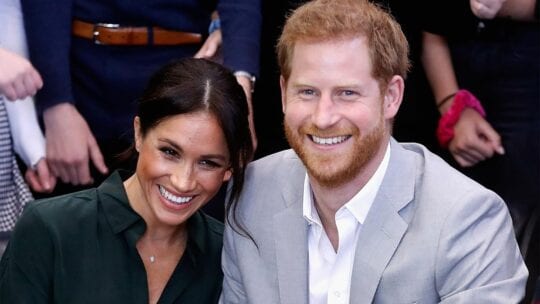
Crisis PR experts believe in pressing the truth, leave nothing to chance and defend your reputation at all times. This is what Meghan Markle, the Duchess of Sussex, and her husband, Prince Harry, did during their bombshell-laden interview with Oprah Winfrey.
The interview was an amazing illustration of the power of a masterfully-executed production. Oprah did her research and showed how to nail an in-depth TV interview. Everything from the way the shots were framed to the participants’ wardrobe, hair and makeup were impeccable.
The interview tackled ugly accusations, but did so in a measured way. Meghan, Harry and Oprah took the high road and came out stronger for it.
Here are key communication takeaways:
Perception isn't always reality. People only see what the media shows them. We never really know what is going on behind the scenes. This interview illustrated that in several ways. First, the fairy tale prince and princess, with the ornate wedding and showy public appearances, claim they were living a life in stark contrast to what the public sees.
When Meghan attended a show at the Royal Albert Hall, she said she wept in the dark. She quickly collected herself and smiled when the lights came up because she was back in the public eye. It was an illustration that outward appearances can be deceiving.
Avoid 'no comment.' Don't miss the chance to set the record straight in real time. During the interview, Meghan said the “institution” repeatedly directed her not to respond to media stories and rampant rumors that were negative or untrue.
Meghan paid the price for this policy–until she decided finally to set the record straight. The Oprah interview provided Meghan a vehicle to speak her truth.
Silence is not an option. Oprah made a dramatic point when she asked if Meghan was “silent” or was “silenced.” The key takeaway is that saying nothing is a choice. Hearing falsehoods about yourself on the news or through the grapevine and doing nothing to clarify the facts is an ineffective strategy, as we said above. Moreover, it can be a frustrating and demoralizing experience.
The Oprah interview was about refuting false messages and replacing them with what the couple believes are the facts.
Nature abhors a vacuum; so does media. Meghan’s story illustrates how false narratives can take root if the press can’t obtain information from reputable sources. In her case, the tabloids made things up or obtained information from unreliable sources with little credibility.
Conflict sells. Meghan spoke about an encounter involving her sister-in-law. The false narrative sparked interest and stirred a media frenzy. Conflict and drama sell newspapers and drive clicks. It is a formula the press loves because it works.
Bad news is much more powerful than good news and more likely to spread online. The saga of Meghan and Harry is proof positive that negativity and conflict spark more interest than good news.
It’s vital to press the truth. No one is going to tell your story better than you. Meghan talks about how she thought the institution was protecting her, then discovered it wasn’t. The Monarchy was unwilling to clarify false narratives about Meghan and set the record straight, so finally she did.
If you are not willing to press the truth, the real story may never be told. Y tiour reputation may be forever damaged.
Practice and preparation pay dividends. Meghan, Harry and Oprah were well-prepared for this momentous interview, which is part of the reason it was compelling. Harry has lived in the public eye and is very comfortable on camera. He was measured, classy and articulate.
As noted above, Oprah did her homework, ditto Meghan. It was evident she was briefed about the range of potential questions she might face. She answered with composure and thoughtfulness.
She also demonstrated that you do not have to answer every question. When asked for details on why Kate made her cry, she declined to elaborate. She said Kate apologized and the matter was settled.
In addition, she and Harry refused to disclose who made comments about the possible color of son Archie’s skin.
Emphasize authenticity. Authenticity is the key reason why people cite social influencers as being effective. Meghan spoke about “living authentically” and “getting back down to basics.” She used this as a mechanism to position Harry and herself as authentic, credible people deserving of sympathy.
Empathy is power. Meghan invited people to empathize with her by speaking in painful personal terms about the pressures of living in the royal fishbowl, wrestling with suicidal thoughts and being worried for the safety of her young son.
Dress the part. Meghan, Harry and Oprah dressed appropriately. Harry was dapper but casual. Meghan’s outfit was simple and flattering, with no flashy jewelry. This let her present herself as a regular person not seeking the limelight and someone who was uncomfortable with the affectations of royal life.
Not only was the interview entertaining, it was packed with stirring visuals, surprising anecdotes and explosive revelations that will continue to reverberate.
And for those paying close attention, it proved that smart and strategic communication can pay off royally.
Evan Nierman is founder and CEO of Red Banyan
